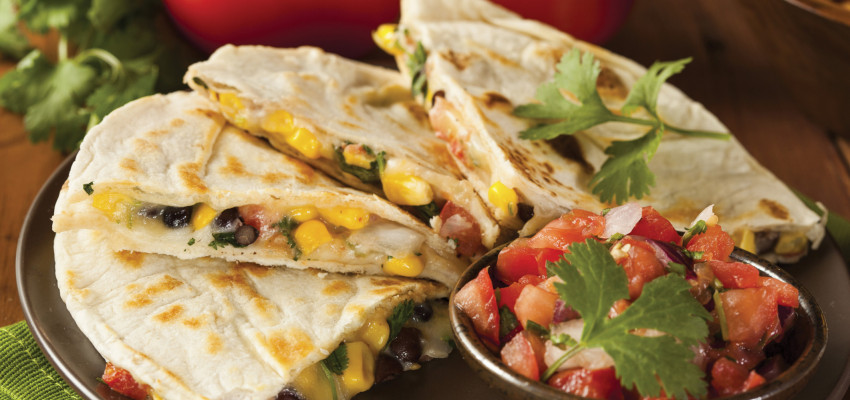By Leah Fliter on November 12, 2015
Delicious Recipes Using Holiday Leftovers

Thanksgiving and Christmas often feature big meals that leave us with some tasty leftovers. Hy-Vee registered dietician Karen Hanson offers some recipes and nutrition tips that will take you beyond turkey casserole and ham sandwiches.
“Turkey and Black Bean Quesadillas and Quick Ham and Beans are two of my favorite ways to use up holiday leftovers,” Hanson says. “Great Northern Beans work well with ham and are a good source of additional, low-fat protein.
“Pairing Thanksgiving turkey with whole-wheat tortillas and salsa helps you enjoy holiday foods while incorporating whole grains and colorful, low-fat vegetables into a smart holiday eating plan,” Hanson continues. “Just substitute cooked turkey for the ground turkey called for in the recipe and simmer it with the beans, salsa, cumin and cheese.”
While holiday leftovers make quick and tasty meals, Hanson cautions it’s important to follow USDA guidelines for promptly refrigerating and properly reheating foods.
“Harmful bacteria can grow in perishable foods within two hours,” she notes. “After that time, make sure to refrigerate leftovers at 40 degrees or below to reduce the risk of foodborne illness in your family and friends.”
Recipes
Turkey and Black Bean Quesadillas
Tips
Promptly refrigerate or freeze perishable leftovers
Bacteria spread fastest at temperatures between 40 degrees F. and 140 degrees F., so chilling food safely reduces the risk of foodborne illness. Refrigerate or freeze the cooked poultry and stuffing within two hours after cooking.
You can’t tell just by looking or smelling whether harmful bacteria have started growing in your leftovers or refrigerated foods. Here are a few steps you can take to store and reheat your leftovers safely:
- To cool the leftovers quickly, divide the food into small portions. Store each portion in shallow, covered containers in the refrigerator.
- Use refrigerated leftovers within three to four days; frozen food within four months.
- Avoid overloading the refrigerator because cold air needs room to circulate.
Reheat leftovers thoroughly
When reheating leftovers, be sure they reach 165° F. Always use a food thermometer to check the internal temperature of the food.
- Reheat sauces, soups and gravies by bringing them to a rolling boil.
- Cover leftovers to reheat. This retains moisture and ensures that food will heat all the way through.
- Thaw frozen leftovers safely in the refrigerator or the microwave oven. When thawing leftovers in a microwave, continue to heat until they reach 165 degrees F. as measured with a food thermometer.
- In a real hurry? It is safe to reheat frozen leftovers without thawing, either in a saucepan or microwave (in the case of a soup or stew) or in the oven or microwave (for example, casseroles and combination meals). Reheating will take longer than if the food is thawed first, but it is safe to do when time is short.
When in doubt, throw it out
The following cooked foods will last in the refrigerator for up to the number of days listed.
Cooked vegetables — 3-4 days
Pasta — 3-4 days
Rice — 7 days
Deli Meats — 5 days
Ham — 3-4 days
Beef, Poultry or Pork — 3-4 days
Gravy — 1-2 days
Stuffing — 1-2 days
Seafood — 2 days
Soups, Stews or Casseroles — 3-4 days


